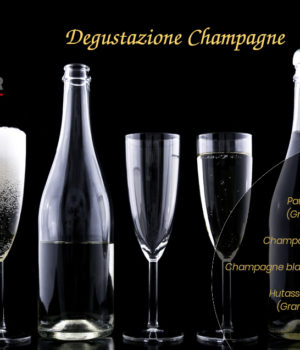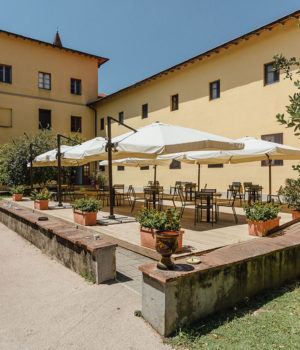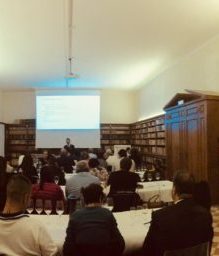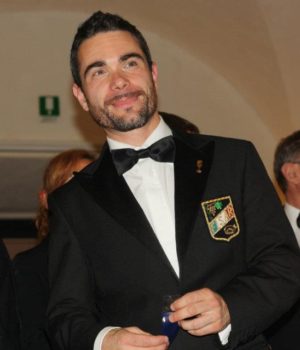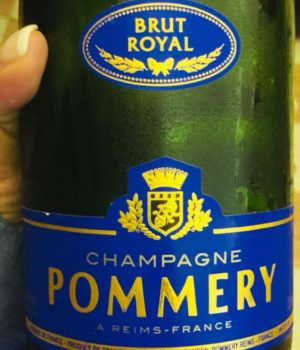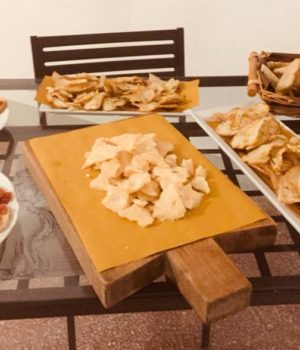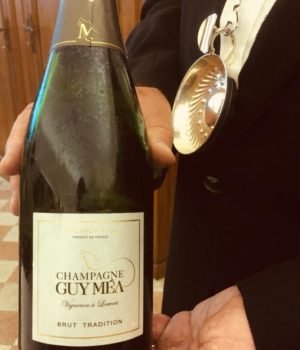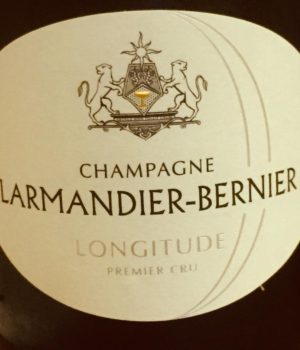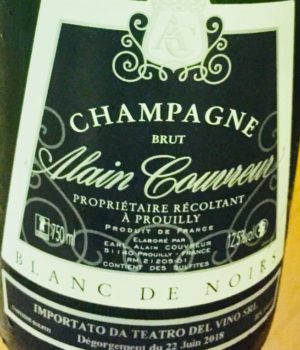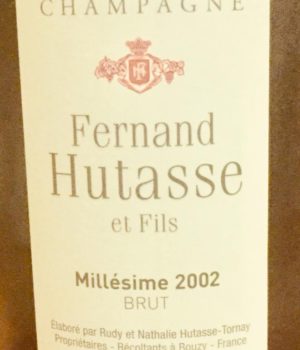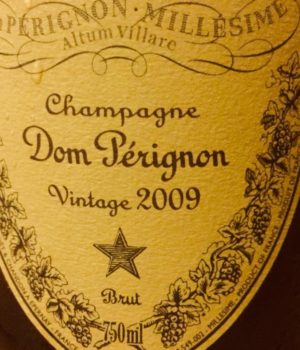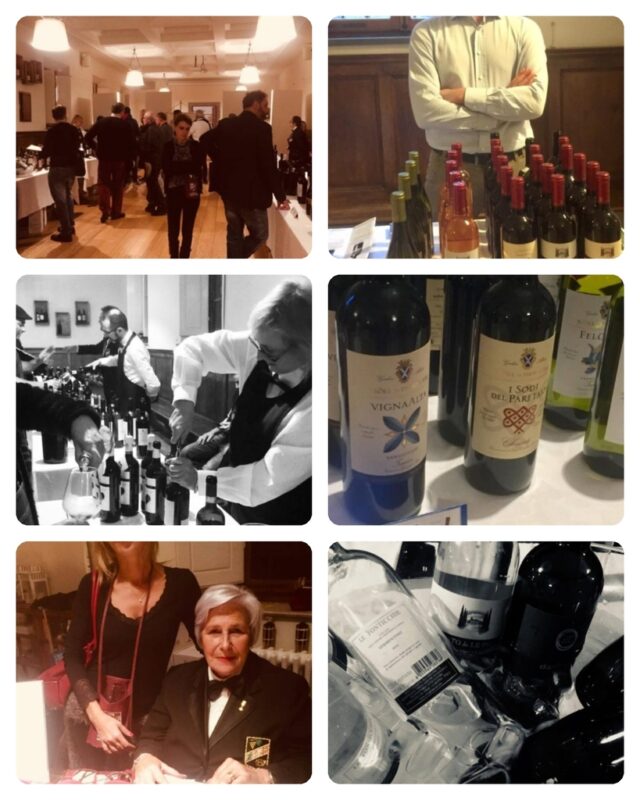Champagne, la Fisar di Pisa docet!
Capodanno, Natale, il cuore di ogni festa è nelle bollicine che salgono brillanti lungo i calici. Certo, oggi nei bicchieri possono fare splendida figura spumanti italiani o spagnoli, americani e perfino australiani, bianchi o rosati, secchi e dolci, ma all’inizio c’era soltanto lui: lo Champagne!
Si tratta di un mondo affascinante, su cui non si finisce mai di imparare . Così per approfondire le mie conoscenze, e per bere oro liquido, partecipo alla Degustazione di Champagne organizzata dalla Fisar di Pisa il 18 Ottobre 2018.
All’interno della suggestiva biblioteca del “Convento dei Cappuccini di Pisa” l’esperto Sommelier Luca Canapicchi svela a un folto pubblico di partecipanti, tutti i segreti dello Champagne in modo semplice e coinvolgente:
- caratteristiche, origini, zone di produzione, differenze tra i piccoli e grandi produttori , legislazione , denominazioni, appellazioni.
Mi auguro il mio resoconto su quanto apprendo, possa essere utile ai neofiti e possa offrire qualche spunto interessante per chi ha maggiore esperienza.
8 Cose da sapere sullo Champagne
1. Lo Champagne è diverso dallo Spumante: sono vini effervescenti ottenuti da diverse qualità di uva coltivate nel mondo e secondo differenti metodi di lavorazione. Un vino Spumante può essere dunque molto diverso per origine e tipologia. I migliori Spumanti, e non solo in Italia, hanno guadagnato la denominazione di origine geografica che ne garantisce la qualità e la provenienza. Un esempio è il “Franciacorta”, prodotto secondo un rigido disciplinare, o il Prosecco Spumante, oggi sempre più apprezzato;
2. Lo Champagne è coltivato nell’omonima zona , Nord Est Parigi, (34.000 ettari), divisa in 5 aeree: “Montagne di Reims” , la “Valle della Marna” , la “Cote des Blancs” , la “Cote de Sèzanne” e la “Cote des Bar (Aube)”;
3. Lo Champagne e il clima : possiede aromi di eccezionale finezza perché nasce da grappoli maturati oltre il 49° parallelo, ultima frontiera a nord per la coltivazione della vite; è questo il segreto della sua inimitabile eleganza, dell’armonico equilibrio tra la freschezza acidula del suo sapore e la calda dolcezza della sua alcolicità;
4. Lo Champagne e il terreno : ma le uve dello Champagne non riuscirebbero a maturare nel rigido clima continentale francese se il terreno (gesso, calcare, ecc… ) su cui sono impiantate le viti non avesse un sottosuolo che riverbera il calore del sole e che dosa alle radici l’acqua della pioggia, assorbendola quando è in eccesso e restituendola lentamente durante la siccità estiva.
5. I vitigni consentiti per la produzione dello Champagne sono tre: https://www.quattrocalici.it/vitigni/pinot-nero/inot Nero (““Montagne di Reims”) che da Pinot Meunier (Valle della Marna”) e Chardonnay (“Cote des Bar (Aube)). I primi due sono a bacca nera e conferiscono allo Champagne corpo e freschezza, il terzo è bacca bianca e dona delicatezza ; in misura nettamente minore, altri vitigni come Arbanne e Petit Meslier;
6. Lo Champagne è ottenuto con il “Metodo Classico”/“Champenoise”, di cui le fasi principali sono :
- Vinificazione in bianco del Pinot Nero, Pinot Meunier, e Chardonnay (Vin de Clair ) e loro assemblaggio detto Cuvée : i tre vitigni principali possono essere di diversa annata (se no si parla di Millesimato) e di diversa provenienza;
- Seconda Fermentazione/Presa di Spuma (che avviene prima in tini e poi in bottiglia) per aggiunta alla Cuvée di zuccheri e lieviti;
- Affinamento a contatto con i lieviti, fondamentale per dare allo Champagne le note aromatiche;
- “Remuage” (manuale o meccanico): dopo il contatto con i lieviti avviene un processo che consiste nel ruotare le bottiglie di qualche millimetro ogni giorno per far scivolare i depositi nel collo della bottiglia;
- “Dégorgement” o “Sboccatura”: rimozione del deposito, raggiunta la posizione verticale, con il collo verso il basso ;
- “Liqueur de Dosage” o “D’expédition” : nella fase conclusiva, verrà aggiunto un, composto spesso da zucchero di canna disciolto nel vino, in dosi variabili a seconda della tipologia di vino prodotto (Doux 50 gr/l ; Demi-Sec 32-50 gr/l ; Sec tra 17 -32 g / l ; Doux più di 50 g / l; Demi-Sec 32 -50 g /l; Extra Dry tra 12 -17 g / l; Brut meno di 12 g / l; Extra Brut 0 – 6 g / l; Pas Dosé o Dosage Zéro con una concentrazione inferiore ai 3 g / l)
- “Blanc de Blancs” : ottenuto esclusivamente da uve Chardonnay;
- “Blanc de Noirs”: ottenuto vinificando in bianco uve nere (Pinot Noir e Pinot Meunier);
- “Rosé”, miscelando vino bianco o vino rosso, oppure da uve rosse vinificate in rosato;
- “Cuvée speciale”: assemblaggio di vini eccezionale qualità (ogni “Maison” la chiama con nome diverso).;
- “Millesimato”: è lo Champagne che dichiara in etichetta l’anno della vendemmia;
- “Grand Cru”: è fatto con uve raccolte in vigneti classificati 100%;
- “Premier Cru”: è fatto con uve raccolte in vigneti classificati tra il 90% e il 99%;
- “Monocru”: preparato con le uve di un solo vigneto anziché con Cuvée. Molto raro
8. Dimensioni bottiglie Champagne:
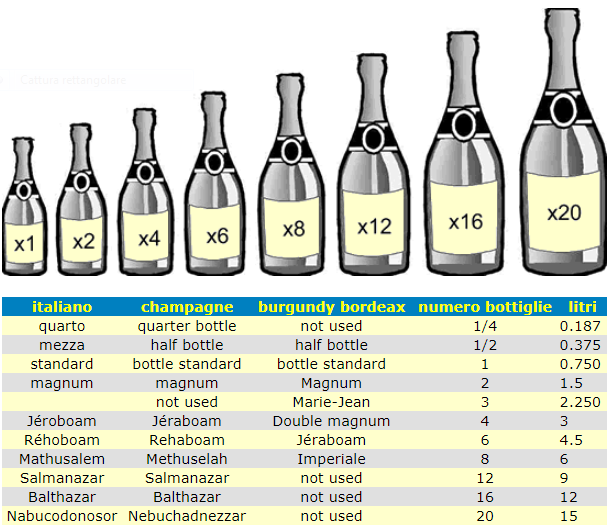
Storia dello champagne
La storia/leggenda dello Champagne comincia con Pierre Pérignon, il monaco benedettino che fu cantiniere e amministratore dell’Abbazia di Hautvillers per 47 anni, dal 1668 al 1715, e che è universalmente conosciuto come l’inventore dello Champagne.
10. Fatti importanti nella seconda metà dell’Ottocento per lo Champagne
- Il chimico francese Louis Pasteur dimostra l’attività dei lieviti e il loro ruolo centrale nella fermentazione, gettando le basi per l’Enologia moderna. Negli stessi anni nasce l’Ampelografia, la scienza che studia e classifica le caratteristiche morfologiche dei vitigni, e l’Agronomia si orienta verso un approccio scientifico;
- Madame Clicquot produce nel 1810 il primo Champagne Millesimato e inventa la prima “Table de Remouage”, una tavola che inclina le bottiglie, facendo gradualmente scivolare i sedimenti verso il collo della bottiglia, da dove possono essere rimossi per rendere il vino più limpido e prezioso;
- Louise Pommery, alla morte del marito, gestisce l’azienda di famiglia fondata nel 1858 che impegnata fino a quel momento nel commercio della lana, punta dopo alla produzione di Champagne. Louise Pommery ha successo, e in breve tempo il marchio di famiglia assurge ad un ruolo di primo piano fra le “Maison” della Regione;
- Nel XVIII secolo nascono le Grandi Maison : Ruinart, Moèt, Vander-Veken, Delamotte, Veuve Cliquot, Heidsieck, Jacquesson, Krug; il loro talento risiede nell’ elaborazione di Cuvée che riflettano immutabilmente lo stile caratteristico di ogni marchio attraverso l’assemblaggio di vitigni, Cru e annate provenienti essenzialmente dagli acquisti di uve presso i “vigneron” (piccoli viticoltori) con i quali stipulano contratti di partnership pluriennali;
- 1882 primi sindacati e associazioni di categoria che lottano per la difesa della denominazione e delle tecniche di viticoltura;
- Fine del XIX secolo diffusione di alcune terribili malattie della vite come l’ Oidio, e la Peronospora che si propagano in tutta Europa portando al grave danneggiamento di quasi tutti i vigneti; in modo particolare per la più distruttiva, la Fillossera (un insetto giunto dall America che attacca le radici della pianta provocandone rapidamente la morte), l’unico rimedio si rivela l’innesto di viti europee su portainnesto di vite americana, immune dal parassita;
- 1911 Scala dei Cru: “Gran Cru” (17 villaggi), “Premier Cru” (44 villaggi) e “Cru” (255 villaggi), classificazione territoriale con cui legalmente si certifica la qualità delle uve costantemente più alta che nel resto della regione a Nord Est di Parigi, Reims, quella tradizionalmente più vocata per la produzione di Champagne;
- Legge sullo Champagne;
- AOC Champagne;
- 1941 nascita della “CIVC” (“Comité Interprofessionnel du vin de Champagne”) ; senza queste azioni, “Champagne” sarebbe divenuto un nome generico, sinonimo di un metodi di elaborazione di vini effervescenti.
Fisar Pisa , evento sullo Champagne
La bellissima serata prosegue con la degustazione delle seguenti etichette, provenienti dai territori più rappresentativi e da produttori di rilievo nel panorama degli Champagne, in abbinamento a degli stuzzichini:
- “Pommery Brut Royal”: secondo produttore al mondo con storia ultracentenaria;
- “Paul Lebrun Extra Brut – Grand Cru” : sapiente uso del legno e dei lieviti;
- “Alain Couvrier Blanc de Noir – Premier Cru” : vigneron Indipendente, semplicità e pulizia;
- “Larmandier Bernier Longitude Blanc de Blanc – Grand Cru”: viticoltore biologico, precisione certosina nella produzione;
- “Hutasse 2002 – Grand Cru” : millesimo pregiato, lunghissimo affinamento;
- ” Dom Perignon 2009 – Grand Cru “: “Champagne”, in una edizione pluripremiata.
Luca Canapicchi, il sommelier 5 stelle
Ho davvero apprezzato la preparazione di Luca Canapicchi, e soprattutto tutto ciò che di nuovo imparo da questa Degustazione di Champagne unica ideata e ben orchestrata dalla Fisar di Pisa.
Sorseggiando un nettare divino pregiatissimo con una storia lunga quasi 300 anni, ringrazio in modo particolare alcuni dei rappresentanti della Fisar di Pisa, Salvo Pulvirenti e Luigi Vaglini, che per l’accoglienza, e per darmi la possibilità di scrivere un post su questa eccezionale esperienza nel mio blog sulle bellezze d’Italia www.WeLoveItaly.eu .
If you like my post, please subscribe to the socials of www.WeLoveitaly.eu :


